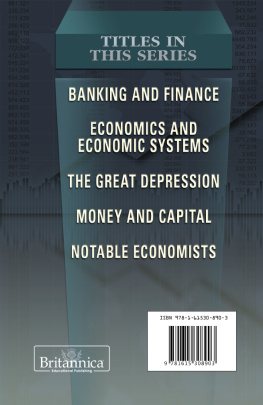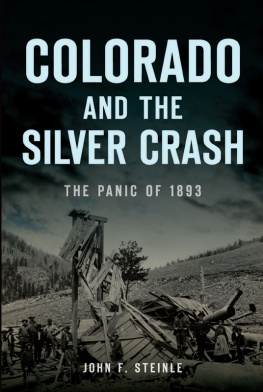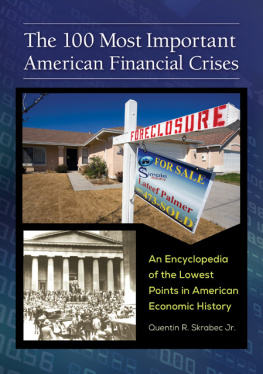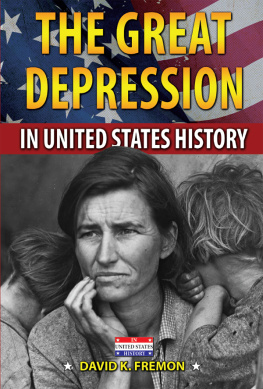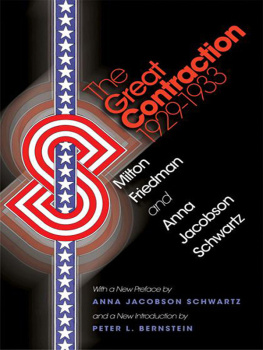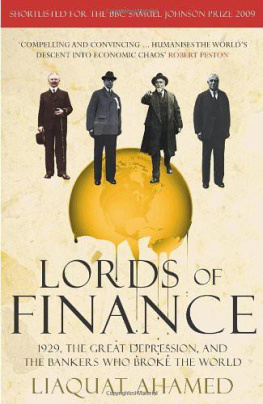ROUTLEDGE HANDBOOK
OF MAJOR EVENTS IN
ECONOMIC HISTORY
The Routledge Handbook of Major Events in Economic History aims to introduce readers to the important macroeconomic events of the past two hundred years. The chapters endeavour to explain what went on and why during the most significanteconomic epochs of the nineteenth, twentieth and early twenty-first centuries and how where we are today fits in this historical timeline. Its short chapters reflect the most up-to-date research and are written by well-known economistswho are authorities on their subjects.
The book is divided into four sections. presents topics from the pre-1919 period and focuses on the experiences of the First and Second Banks of theUnited States, the recurring financial panics and their role in the establishment of the Federal Reserve System, thelong deflation of the 1870s, the great merger wave, and the functioning of the classical gold standard. It ends with a discussion of the tragedy and horror that was World War I.
addresses the history of the interwar era (19191939) and World War II. The economics of the 1920s and the Great Depression comprise the greatest share of chapters in this section. It ends with a discussion of the tragedy and horror that was World War II
looks at the post-World War II period and the transitional economic events that make up the history of 1945 to the early 2000s. The great inflation of the 1970s to the disinflation of the 1980s, the rise of China and India to the fall of Japan and the Soviet Union, the rebuilding of Europe under the Marshall Plan and the advent of globalization to the rise and fall of the Bretton Woods system and the Phillips Curve. The urban riots of the 1960s and the history of oil shocks, shocks that have played such an important role in the evolution of post-World War II business cycle disturbances, are also included.
contains topics of the contemporary era. The most recent economic issues include world hyperinflations, the emergence of mass-market merchandisers, the panic of 2008 and monetary policy responses, the Eurozone and its future, government bailouts and the economics of entitlements, debt and deficits.
The Routledge Handbook of Major Events in Economic History was written with the intent of presenting the professional consensus in explaining the economics driving these historical events.
Randall E. Parker is Professor of Economics at East Carolina University, USA.
Robert Whaples is Professor of Economics at Wake Forest University, USA.
ROUTLEDGE
HANDBOOK OF
MAJOR EVENTS IN
ECONOMIC HISTORY
Edited by Randall E. Parker and Robert Whaples

First published 2013 by Routledge
2 Park Square, Milton Park, Abingdon, Oxon OX14 4RN
Simultaneously published in the USA and Canada by Routledge
711 Third Avenue, New York, NY 10017
Routledge is an imprint of the Taylor & Francis Group, an informa business
2013 selection and editorial material, Randall E. Parker and Robert Whaples; individual chapters, the contributors
The right of the editor to be identified as the author of the editorial material, and of the authors for their individual chapters, has been asserted in accordance with sections 77 and 78 of the Copyright, Designs and Patents Act 1988.
All rights reserved. No part of this book may be reprinted or reproduced or utilised in any form or by any electronic, mechanical, or other means, now known or hereafter invented, including photocopying and recording, or in any information storage or retrieval system, without permission in writing from the publishers.
Trademark notice: Product or corporate names may be trademarks or registered trademarks, and are used only for identification and explanation without intent to infringe.
British Library Cataloguing in Publication Data
A catalogue record for this book is available from the British Library
Library of Congress Cataloging in Publication Data
Routledge handbook of major events in economic history/ Edited by Randall E. Parker and Robert Whaples.
pages cm
1. Economics - History. I. Parker, Randall E., 1960- II. Whaples, Robert. III. Title: Handbook of major events ineconomic history.
HB75.R6748 2013
ISBN: 9780415677035 (hbk)
ISBN: 9780203067871 (ebk)
Typeset in Bembo
by HWA Text and Data Management, London
CONTENTS
PART I
World War I andthe pre-World War I era
Eric Lomazqff
Elmus Wicker
Richard C. K. Burdekin and Pierre L. Siklos
Anthony Patrick O'Brien
Mark Carlson
Ellis W. Tallman
Mark Toma
Jari Eloranta
Kris James Mitchener
PART II
The interwar era and World War II
Martha L. Olney
Harold Bierman, Jr.
Michael Kitson
Randall E. Parker
Price V. Fishback
Lee E. Ohanian
James L. Butkiewicz
Robert Higgs
PART III
Post-World War II era
Nicholas Crafts
William J. Collins
Robert L. Hetzel
James D. Hamilton
Arnold Kling
Barry Eichengreen
Allan H. Meltzer
Loren Brandt
Areendam Chanda
Etsuro Shioji
Richard E. Ericson
Teresa Gramm
PART IV
The contemporary era
Steve H. Hanke and Nicholas Krus
Gary Gorton and Andrew Metrick
W. Douglas McMillin
Art Carden
Robert E. Wright
John J. Seater
LIST OF FIGURES
| Seasonal net cash flows to New York City banks |
| Seasonal average call money interest rate versus the path in 1907 |
| Daily maximum call loan interest rate |
| Bankers balances versus clearing house loan certificates: New York Clearing House member banks |
| Loans, deposits, and cash reserves of New York Clearing House banks |
| Annual growth rate of industrial production, 18631915 |
| Real GNP during contractions taken relative to prior peak |
| Military burdens of Great Britain, France, Germany, Austria-Hungary and Russia, 18701913 |
| Indices of real GDP, real military spending (ME), total population (POP), iron and steel production (IRST), and military personnel (MP) as sixteen country totals, 18701913 |
| Real gross domestic product, 19001929 |
| Unemployment rate, 19001930 |
| Consumer price inflation rate, 19001930 |
| National income by industry group, 1929 |
| The rise and fall of the gold standard (number of countries on gold, 19191937) |
| Industrial production 1919:11939:12 |
| M1, M2 and the monetary base 1919:11939:12 |
| Per capita personal income and per capita federal grants in the state in 1967 dollars, 193040 |
| Actual output and predicted model output with only productivity change: 19291939 |
| Industrial production and M2 |
| Consumer prices and M2 |
| Effects of government expenditure on income determination |
| Inflationary gap |
|




